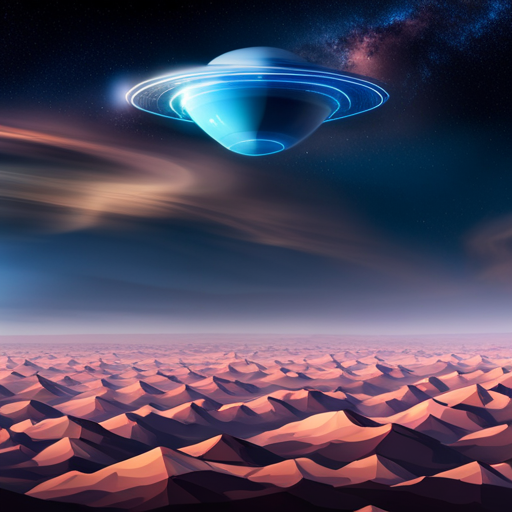The interstellar object (ISO) known as 1I/”Oumuamua, which buzzed our planet on its journey out of the solar system, was seen for the first time by humanity in 2017. There are many theories as to what this object might be because it was obvious from the scant information that it was unlike anything that had ever been observed by astronomers. It was rumored that it might have been an alien probe (or a fragment of a crashed spacecraft) travelling through our solar system.
The ODNI’s publishing of the UFO Report in 2021 added fuel to the public’s infatuation with the idea of “alien visitors.”
This action essentially turned the investigation of unidentified aerial phenomenon (UAP) into a scientific endeavor rather than a covert operation under the control of government organizations. Scientists are putting forth ideas about how to employ current developments in computers, AI, and sensors to help in the detection of potential “visitors” while keeping one eye on the skies and the other on orbiting objects. This includes a current investigation into the creation of an advanced data pipeline using hyperspectral imaging and machine learning by a team from the University of Strathclyde.
Researchers from the departments of mechanical and aerospace engineering, electronic and electrical engineering, and the Fraunhofer Centre for Applied Photonics in Glasgow made up the team, which was led by Massimiliano Vasile, a professor in those fields.
This paper is the most recent in a series that discusses uses of hyperspectral imaging for space operations. The Hyperspectral Imager for Space Surveillance and Tracking (HyperSST) project’s first publication, “Intelligent characterization of space objects with hyperspectral imaging,” was published in Acta Astronautica in February 2023. This project is a forerunner to the ESA’s Hyperspectral space debris Classification (HyperClass) initiative and was chosen by the UK Space Agency (UKSA) last year from a pool of 13 debris classification concepts for funding.
Their most recent study investigated the potential applications of the same imaging method in the expanding UAP detection field. To identify various items or materials that are captured in photographs, this technique involves gathering and processing data from single pixels across the electromagnetic spectrum. By reducing false positives brought on by man-made debris items (spent stages, defunct satellites, etc.), Vasile stated to Universe Today via email that hyperspectral imagery combined with machine learning has the ability to focus the hunt for probable technosignatures.
If UAP are space objects, then studying the spectra will allow us to determine the material makeup of even a single pixel. By examining the time variation of the spectra, we may also comprehend the motion of the attitude. Both are crucial because they allow us to recognize objects by their spectral signatures and comprehend their motion with only a few basic optical requirements.
Vasile and his associates suggest developing a data processing pipeline for UAP picture processing with machine learning methods. They first described how a collection of time-series spectra of space objects, such as satellites and other objects in orbit, is required for the workflow. This includes debris objects, which calls for merging information from other national and international organizations as well as the Orbital Debris Programme Office (ODPO) of NASA, the Space Debris Office of the ESA, and others. This dataset needs to be diversified and contain information on various orbital possibilities, trajectories, lighting situations, and accurate geometry, material distribution, and attitude motion information for all orbiting objects at all times.
To put it simply, in order to weed out false positives, scientists would require a thorough database of all human-made objects in space. Because a large portion of this data is not readily available, Vasile and his team developed numerical physics simulation software to generate training data for the machine learning models. The next phase involves using a two-pronged strategy to link a spectrum to the collection of materials that generated it, one based on machine learning and the other on a more conventional mathematical regression analysis used to find the line that best fits a set of data (also known as the least square method).
The likelihood of discovering a combination of materials was then linked to a certain class using a classification technique based on machine learning. After the pipeline was finished, says Vasile, testing were conducted, and the results were encouraging:
They carried out three tests, the first of which was in a lab using a model satellite composed of well-known components. These tests came back extremely positive. After that, they developed a highly realistic simulator to mimic actual orbital object observation. Positive test results allowed them to learn a lot. Finally, they made use of a telescope to view several satellites and the space station. Because their material database is currently fairly small, certain experiments in this example were successful while others were less successful.
Vasile and his coworkers will outline the attitude reconstruction component of their pipeline in their upcoming publication. They intend to exhibit this pipeline at the upcoming AIAA Science and Technology Forum and Exposition (2024 SciTech), which will take place from January 8–12 in Orlando, Florida.








